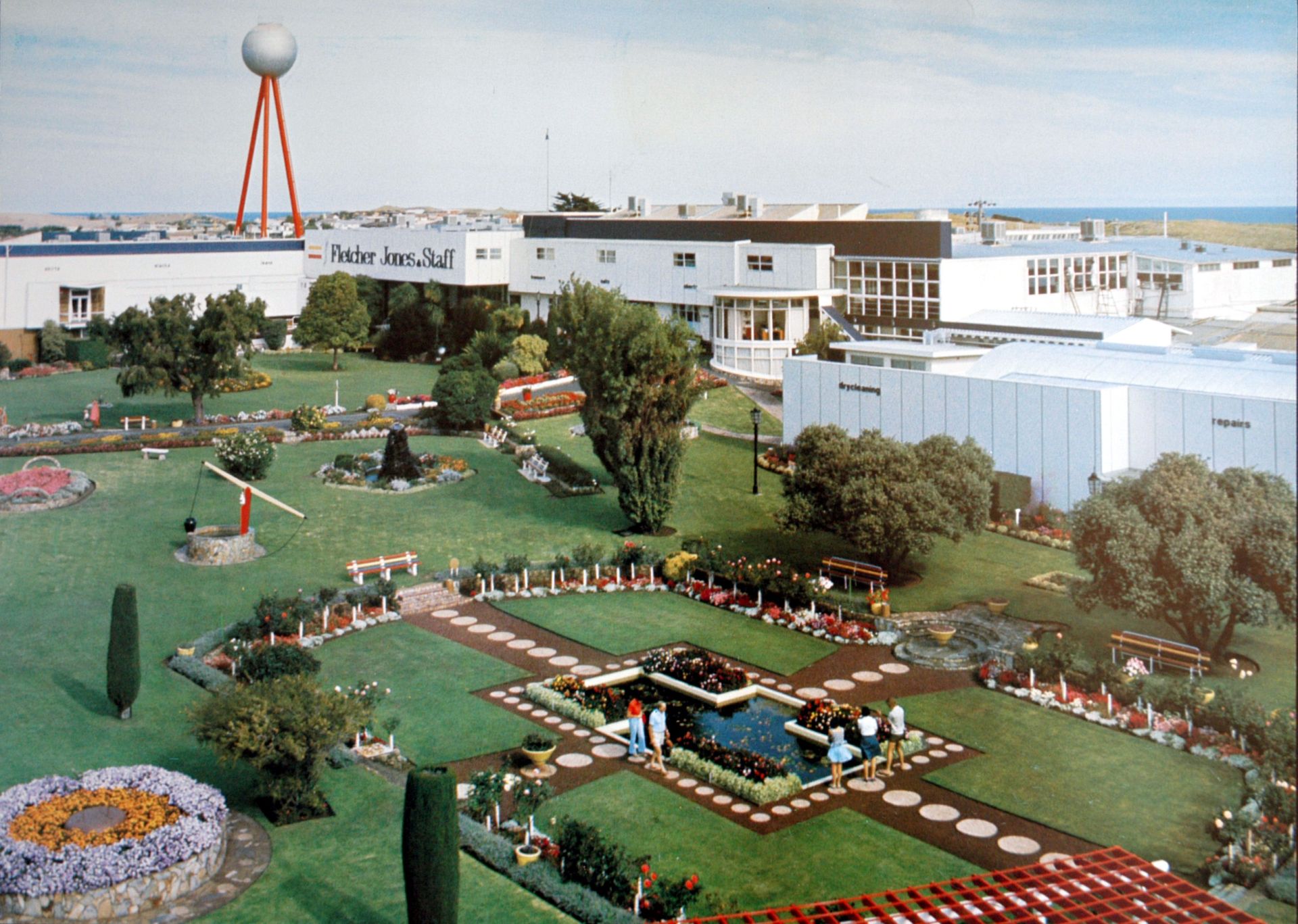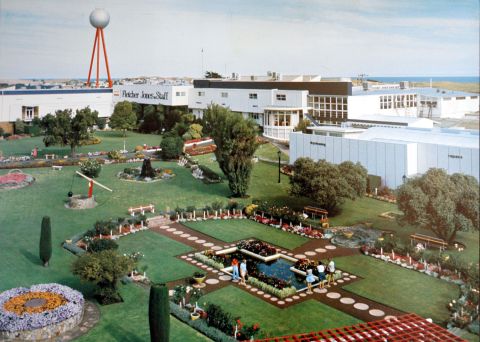“After the opening of the Pleasant Hill Warrnambool factory in 1948, work began the following year on creating a garden from the unsightly quarries and rubbish dump surrounding the factory.
"Why should a factory look like a factory" Fletcher asked his brother-in-law Leslie (Darby) Boucher, who took up the challenge to go on and create the most famous industrial gardens in Australia, visited by thousands of people each year. The photos show the gardens at the height of their manicured glory in the 60's and 70s.
Additional land was purchased and the gardens were extended to the west in 1951. The gardens were state heritage listed in 2006 as (they) "are considered a rare and outstanding example of a mid-twentieth century garden created in an industrial setting. Sculptures, waterfalls, a sunken garden and pond, pergolas, urns, flower baskets and other landscape features were complemented by manicured lawns and hedges clipped into squares and balls. The planting was intricate and colourful and maintained to the highest horticultural standards where neatness and control ruled."
Since 2014, the gardens are in the process of being fully restored to their former glory.

